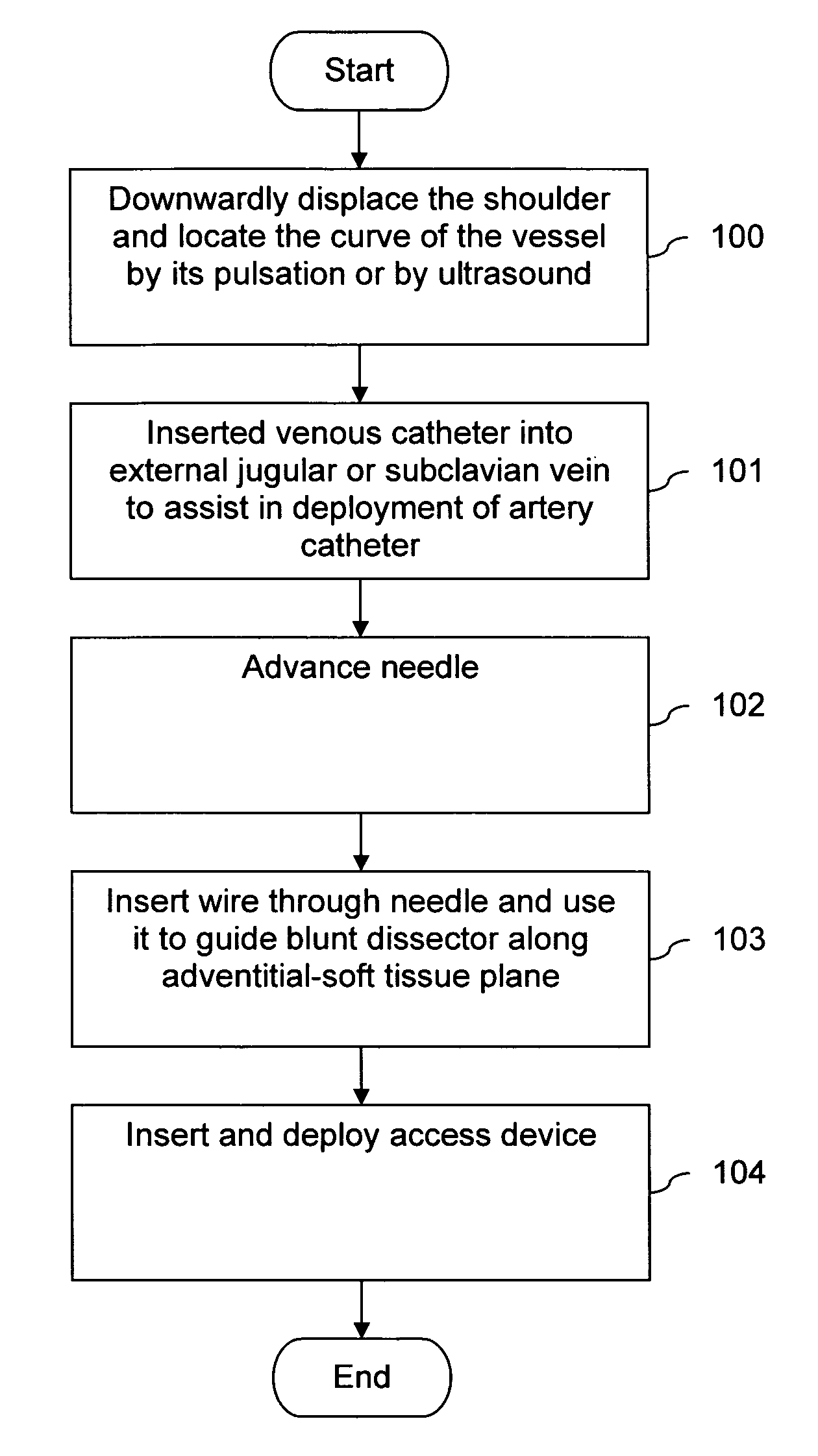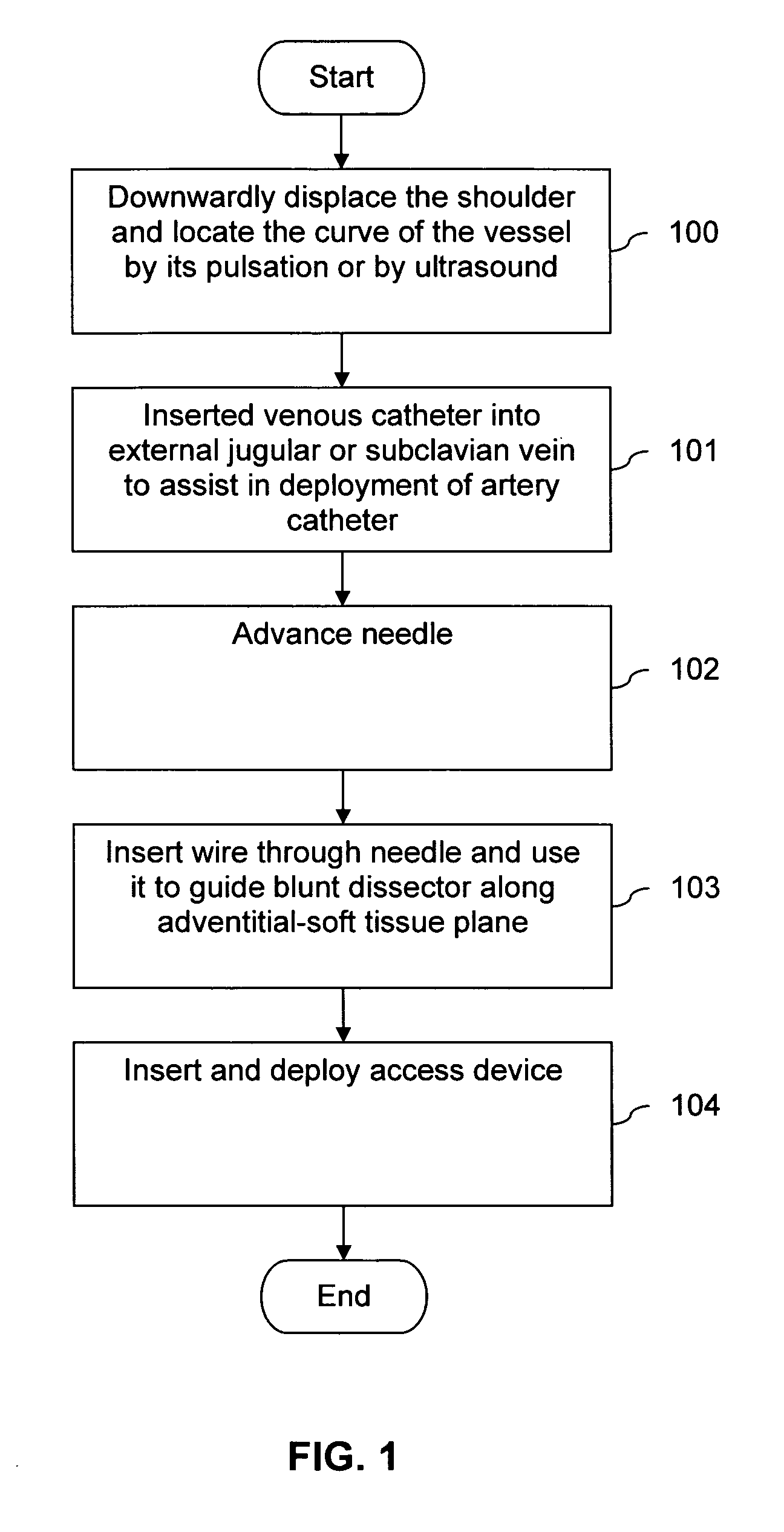Method and apparatus for vascular access
a vascular access and apparatus technology, applied in the field of vascular access methods and apparatuses, can solve the problems of difficulty in delivering treatment to diseases of the aorta and its branches, complicated procedures such as arterial bleeding, occlusion and embolization, and the failure rate of percutaneous devices to date is approximately 5 percent, so as to prevent embolization
- Summary
- Abstract
- Description
- Claims
- Application Information
AI Technical Summary
Benefits of technology
Problems solved by technology
Method used
Image
Examples
Embodiment Construction
[0009]Disclosed here are methods and apparatus for chamberless vascular access and for facilitating access. The objective of eliminating the chamber of a vascular access device is achieved by making the vessel itself the chamber and incorporating the device as part the artery. The objective of facilitating access include methods and devices for automating the access process and preventing embolization.
[0010]Described therein in FIG. 1 is a method for vascular access that involves placement of a self sealing diaphragm or nipple on a vessel such as the supraclavicular or infraclavicular subclavian artery. The supraclavicular portion of the vessel can be accessed most readily by downward displacement of the shoulder, locating the curve of the vessel by its pulsation or by ultrasound (100). Further landmarks for a large individual include the mid clavicle and the external jugular vein as it courses to the clavicle. A venous catheter as described below may be inserted into the external j...
PUM
 Login to View More
Login to View More Abstract
Description
Claims
Application Information
 Login to View More
Login to View More - R&D
- Intellectual Property
- Life Sciences
- Materials
- Tech Scout
- Unparalleled Data Quality
- Higher Quality Content
- 60% Fewer Hallucinations
Browse by: Latest US Patents, China's latest patents, Technical Efficacy Thesaurus, Application Domain, Technology Topic, Popular Technical Reports.
© 2025 PatSnap. All rights reserved.Legal|Privacy policy|Modern Slavery Act Transparency Statement|Sitemap|About US| Contact US: help@patsnap.com


